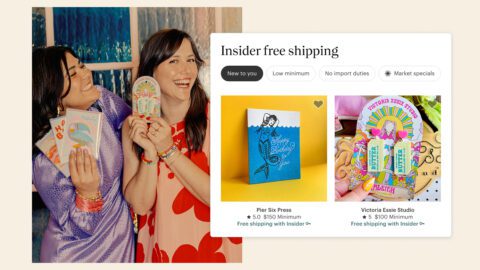Email is one of the oldest and most established marketing channels, but that doesn’t mean there aren’t still improvements to be made — or fresh opportunities to be found. Retailers tempted to put the bulk of their energy into outreach through newer social or mobile platforms, believing that email is already “solved” or even outdated, are missing out on a channel with a massive audience that can also be targeted with extreme precision.
“It’s a channel and data that retailers and brands actually own,” said Andrea Wasserman, a former senior consumer executive at Nordstrom and Verizon in an interview with Retail TouchPoints. “We’ve seen, especially over the past couple of years, how any one social media platform can change their algorithm and [how] that really dramatically alters people’s businesses. So to be able to have something that you control, that is your audience that has opted in to hear from you, is very different and inherently valuable.”
Managing a great email campaign comes with its own set of challenges and opportunities. Some of the biggest considerations retail marketers need to keep in mind include:
- Stay out of the spam filter: The greatest email marketing campaign ever dreamed up is useless if your customers don’t even realize you sent it out, so retailers need to properly segment, optimize and monitor their campaigns to ensure their messages are being read;
- Leverage dynamic content and AMPs: Modern emails aren’t the boring digital letters of the past — dynamic content fields can infuse new levels of personalization, while Accelerated Mobile Pages (AMP) carry the power of immersive app design into the customer’s inbox;
- Take personalization to the next level: Personalization is an important part of every marketing effort, but in a channel as well-established and competitive as email, ensuring campaigns are truly tailored is essential to standing out from the crowd; and
- Iterate, iterate, iterate: There is no single winning email marketing strategy, companies must constantly test what is working and adjust accordingly to find the right content and schedule for both mobile and desktop users.
4 Reasons Email Remains Relevant in a Mobile World
The ubiquity of mobile phones can make email marketing seem almost outdated compared to push notifications in terms of their ability to reach shoppers quickly and conveniently. However, Nick Kramer, Leader of Applied Solutions at SSA & Company, laid out four reasons why email remains important:
- Wide Reach: Email still has a much broader reach than SMS — while almost everyone has an email address, there is still a significant demographic that either doesn’t have a mobile phone or doesn’t use SMS regularly;
- Personalization: Email marketing has the potential for more advanced personalization options than mobile-focused approaches due to the limited number of characters available for SMS messages;
- Better Tracking: Marketers can manage in-depth tracking of customer engagement, including open rates, click-through rates and other metrics through email, surpassing what’s available elsewhere; and
- Cost-Effective: Email marketing is generally more cost-effective than SMS since it doesn’t require the use of a mobile network or phone plan. This makes it an attractive option for businesses of all sizes.
Give Customers a Reason to Open Your Emails
The perennial problem facing email marketers is volume. Every customer is flooded with emails from every retailer they’ve shopped with, to say nothing of unsolicited spam, which can make getting into recipients’ inboxes a challenge in and of itself. Even emails that aren’t marked as spam can be filtered into unfocused inbox categories.
That fact makes ensuring that messages get opened, and hopefully read, a challenge, but Kramer noted that retailers can follow several strategies to improve their chances. One of the key elements is using segmented lists that enable sending targeted emails to specific groups of customers who are more interested in a given campaign or promotion, which in turn is more likely to generate engagement.
Additionally, content should be optimized for readability. Emails need to be easily digested, which means formatting them with short paragraphs and using bullet points and images that can break up text as well as a clear call-to-action. Additionally, retailers need to test different subject lines, content formats and sending times to see what works best for their audience.
Finally, marketers need to keep an eye on the results to ensure all the above is actually working. “Use an email service provider that provides metrics on your email deliverability,” said Kramer in an interview with Retail TouchPoints. “Keep an eye on your bounce rates, spam complaints and unsubscribe rates to ensure that your messages are reaching your subscribers’ inboxes and not being filtered out.”
Getting every aspect of email right is a job for data, just like so many other tasks in modern retail. Few things are as annoying to a potential customer as messaging that makes it clear a retailer contacted them with an offer based solely on one purchase they made rather than their actual interests or history with the company.
“There is so much data that we have on customers and we really should be using it,” said Wasserman. “If it’s somebody who is typically buying men’s clothing, and maybe they bought a piece of women’s jewelry around a holiday, you should really be sending them more emails about men’s offers than about women’s. Maybe around that same holiday or date send them something on women’s, but reflect the fact that you can see their purchase history.”
Technology can Make Emails Dynamic, Real-Time and Compelling
Electronic mediums have far more potential than static messages, and retailers should take advantage of AMP and dynamic content fields to ensure these possibilities are being utilized to their fullest. For instance, AMP can help emails feel like living documents rather than stale advertisements.
“It’s really an app-like dynamic experience for email, where brands are able to make the content much more personalized and feel really on-demand and real-time,” said Wasserman. “For ecommerce specifically, you could showcase what’s in stock right now — whether just that it’s in stock or including [available] quantities to create more urgency. You could include referral campaigns that actually feature information as of this moment, such as how many new customers somebody has referred. It gives them that real-time view into things.”
Other possibilities for AMP include loyalty program updates (such as tracking the number of points accumulated) or reminders to review a product the customer recently bought, according to Wasserman.
Kramer noted that retailers also can use AMP to add items like carousels, forms “and other interactive elements that allow customers to engage with your content directly within the email.” Boosting the interactivity of an email increases the chances that a customer will want to engage with it.
Dynamic content fields enable further personalization, such as changing email content based on factors such as location, past purchases or interests. This lets marketers display different product recommendations for different segments of their lists to make emails more relevant. These capabilities can be combined with AMP to create emails that are truly interesting and insightful.
“By combining dynamic content fields and AMP capabilities, you can create highly personalized and interactive email experiences that are tailored to each individual recipient,” said Kramer. “For example, you could use dynamic content to personalize product recommendations, and then use AMP to create an interactive carousel that allows users to browse those products directly within the email.”
Tailor Content to the Device While Keeping it Concise
Even the best content can fall short if it isn’t tailored to the right device. Wasserman suggested that marketers assume that their messages will be opened on mobile, which makes it important to test length early and often — an email that takes 12 scrolls to get through isn’t one that will resonate with busy customers.
Desktop also has its own best practices. More space is available, but scrolling should still be kept to a minimum, and retailers must ensure that the entirety of the content is available without needing to click through to a new window or tab. Wasserman noted that retailers should be familiar with how Gmail and other popular email providers display emails. Requiring just one extra click can be the difference between a promotion being seen and a customer deciding no discount is worth the bother.
Personalization Must Keep Pace with Technology
Advances in AI have raised the stakes for personalization across the retail industry, and email is no exception. Using personalization in combination with dynamic content is now vital to catching the customer’s eye in the first place, then dazzling them with relevant messaging.
The trick is that modern email campaigns have to go above and beyond the baseline of targeting shoppers based on past purchases. That remains a good starting point, but now retailers have access to enough data, and the tools necessary to properly analyze it, to create campaigns that reach shoppers with truly compelling offers at the perfect moment.
“While personalization has been a part of email marketing for a while, there are new technologies that allow for even more advanced personalization,” said Kramer. “For example, predictive personalization uses machine learning to anticipate the content that a user is most likely to engage with and present it to them proactively.”
Modern technology also means that no retailer should be going in completely “blind,” even when there’s only scant information about the recipient. In this case, the consumer’s actions should determine the type of welcome email a retailer should send. Someone who just signed up to receive emails would get a different message than a customer who just made their first purchase with a retailer — or even one who added an item to their cart but abandoned it.
“Emails can be tailored to whether you just bought something for the first time,” said Wasserman. “If you did, you probably know a little about the company. Or if you put your email address into a capture form, maybe you’d like a discount because you haven’t bought anything yet. Thinking about those as paths for personalization is really important.”
Managing Email’s Complexity Requires Constant Testing
The sheer number of possibilities available for any email, from compelling promotional offers to eye-catching use of AMP, makes this a very complex format. Add in the fact that every retailer will have multiple unique audiences, each with its own preferences, for everything from length to timing of messages, and it’s impossible to come up with a one-size-fits-all strategy for a great email campaign.
However, there is one common aspect shared by all email marketing efforts: you must test and measure often and repeatedly. Shoppers’ demands are constantly evolving, and retailers need to keep up with what’s working and what isn’t if they want to unlock the full power of email marketing.
“The most common and impactful misstep is not testing rigorously enough,” said Kramer. “Testing should be ongoing and built into the budget, plan and metrics. It is the only way to stay aligned to the shifting needs of the customer and value of each channel, each innovation.”















